Direct Hydroxylation of Benzene with Hydrogen Peroxide Using Fe Complexes Encapsulated into Mesoporous Y-Type Zeolite
Abstract
:1. Introduction
2. Results and Discussion
2.1. Preparation and Characterization of Mesoporous Y-Type Zeolite
2.2. Preparation and Characterization of the Fe Complexes Encapsulated into the Zeolite
2.3. Oxidation of Benzene with Hydrogen Peroxide
3. Materials and Methods
3.1. General
3.2. Preparation of Mesoporous Y-Type Zeolite
3.3. Preparation of the Fe Complexes Encapsulated into Zeolite
3.4. Catalytic Oxidation of Benzene
4. Conclusions
Supplementary Materials
Author Contributions
Funding
Conflicts of Interest
References
- Shilov, A.E.; Shul’pin, G.B. Activation of C-H Bonds by Metal Complexes. Chem. Rev. 1997, 97, 2879–2932. [Google Scholar] [CrossRef] [PubMed]
- Brodsky, B.H.; Du Bois, J. Oxaziridine-Mediated Catalytic Hydroxylation of Unactived 3° C-H Bonds Using Hydrogen Peroxide. J. Am. Chem. Soc. 2005, 127, 15391–15393. [Google Scholar] [CrossRef] [PubMed]
- Kamata, K.; Yonehara, K.; Nakagawa, Y.; Uehara, K.; Mizuno, N. Efficient stereo- and regioselective hydroxylation of alkanes catalysed by a bulky polyoxometalate. Nat. Chem. 2010, 2, 478–483. [Google Scholar] [CrossRef] [PubMed]
- Newhouse, T.; Baran, P.S. If C-H Bonds Could Talk: Selective C-H Bond Oxidation. Angew. Chem. Int. Ed. 2011, 50, 3362–3374. [Google Scholar] [CrossRef] [Green Version]
- Antonyraj, C.A.; Srinivasan, K. One-Step Hydroxylation of Benzene to Phenol Over Layered Double Hydroxides and their Derived Forms. Catal. Surv. Asia 2013, 17, 47–70. [Google Scholar] [CrossRef]
- Kamata, K.; Yamaura, T.; Mizuno, N. Chemo- and Regioselective Direct Hydroxylation of Arenes with Hydrogen Peroxide Catalyzed by a Divanadium-Substituted Phosphotungstate. Angew. Chem. Int. Ed. 2012, 51, 7275–7278. [Google Scholar] [CrossRef]
- Borah, P.; Ma, X.; Nguyen, K.T.; Zhao, Y. A Vanadyl Complex Grafted to Periodic Mesoporous Organosilica: A Green Catalyst for Selective Hydroxylation of Benzene to Phenol. Angew. Chem. Int. Ed. 2012, 51, 7756–7761. [Google Scholar] [CrossRef]
- Khatri, P.K.; Singh, B.; Jain, S.L.; Sain, B.; Sinha, A.K. Cyclotriphosphazene grafted silica: A novel support for immobilizing the oxo-vanadium Shiff base moieties for hydroxylation of benzene. Chem. Commun. 2011, 47, 1610–1612. [Google Scholar] [CrossRef]
- Tanev, P.T.; Chibwe, M.; Pinnavaia, T.J. Titanium-containing mesoporous molecular sieves for catalytic oxidation of aromatic compounds. Nature 1994, 368, 321–323. [Google Scholar] [CrossRef]
- Balducci, L.; Bianchi, D.; Bortolo, R.; D’Aloisio, R.; Ricci, M.; Tassinari, R.; Ungarelli, R. Direct Oxidation of Benzene to Phenol with Hydrogen Peroxide over a Modified Titanium Silicalite. Angew. Chem. Int. Ed. 2003, 42, 4937–4940. [Google Scholar] [CrossRef]
- Bartoli, J.-F.; Mouries-Mansuy, V.; Le Barch-Ozette, K.; Palacio, M.; Battioni, P.; Mansuy, D. New Manganaese β-polynitroporphyrins as Partial efficient catalysts for biomimetic hydroxylation of aromatic compounds with H2O2. Chem. Commun. 2000, 827–828. [Google Scholar] [CrossRef]
- Mori, K.; Kagohara, K.; Yamashita, H. Synthesis of Tris(2,2′-bipyridine)iron(II) Complexes in Zeolite Y Cages: Influence of Exchange Alkali Metal Cations on Physicochemical Properties and Catalytic Activity. J. Phys. Chem. C 2008, 112, 2593–2600. [Google Scholar] [CrossRef]
- Gu, Y.-Y.; Zhao, X.-H.; Zhang, G.-R.; Ding, H.-M.; Shan, Y.-K. Selective hydroxylation of benzene using dioxygen activated by vanadium-copper oxide catalysts supported on SBA-15. Appl. Catal. A 2007, 328, 150–155. [Google Scholar] [CrossRef]
- Bal, R.; Tada, M.; Sakai, T.; Iwasawa, Y. Direct Phenol Synthesis by Selective Oxidation of Benzene with Molecular Oxygen on an Interstitial-N/Re Cluster/Zeolite Catalyst. Angew. Chem. Int. Ed. 2006, 45, 448–452. [Google Scholar] [CrossRef] [PubMed]
- Niwa, S.; Eswaramoorthy, M.; Nair, J.; Raj, A.; Itoh, N.; Shoji, H.; Namba, T.; Mizukami, F. A One-Step Conversion of Benzene to Phenol with a Palladium Menbrane. Science 2002, 295, 105–107. [Google Scholar] [CrossRef]
- Shoji, O.; Kunimatsu, T.; Kawakami, N.; Watanabe, Y. Highly Selective Hydroxylation of Benzene to Phenol by Wild-type Cytochrome P450BM3 Assisted by Decoy Molecules. Angew. Chem. Int. Ed. 2013, 52, 6606–6610. [Google Scholar] [CrossRef]
- Tani, M.; Sakamoto, T.; Mita, S.; Sakaguchi, S.; Ishii, Y. Hydroxylation of Benzene to Phenol under Air and Carbon Monoxide Catalyzed by Molybdovanadophosphoric Acid. Angew. Chem. Int. Ed. 2005, 44, 2586–2588. [Google Scholar] [CrossRef]
- Laufer, W.; Hoelderich, W.F. New direct hydroxylation of benzene with oxygen in the presence of hydrogen over bifunctional ion- exchange resins. Chem. Commun. 2002, 1684–1685. [Google Scholar] [CrossRef]
- Lee, B.; Naito, H.; Hibino, T. Electrochemical Oxidation of Benzene to Phenol. Angew. Chem. Int. Ed. 2012, 51, 440–444. [Google Scholar] [CrossRef]
- Yuzawa, H.; Aoki, M.; Otake, K.; Hattori, T.; Itoh, H.; Yoshida, H. Reaction Mechanism of Aromatic Ring Hydroxylation by Water over Platinum-Loaded Titanium Oxide Photocatalyst. J. Phys. Chem. C 2012, 116, 25376–25387. [Google Scholar] [CrossRef]
- Ohkubo, K.; Kobayashi, T.; Fukuzumi, S. Direct Oxygenation of Benzene to Phenol Using Quionlinium Ions as Homogeneous Photocatalysts. Angew. Chem. Int. Ed. 2011, 50, 8652–8655. [Google Scholar] [CrossRef] [PubMed]
- Knops-Gerrits, P.-P.; DeVos, D.; Thilbault-Starzyk, F.; Jacobs, P.A. Zeolite-encapsulated Mn(II) complexes as catalysts for selective alkene oxidation. Nature 1994, 369, 543–546. [Google Scholar] [CrossRef]
- Bedioui, F. Zeolite-encapsulated and clay-intercalated metal porphyrin, phthalocyanine and Schiff-base complexes as models for biomimetic oxidation catalysts: An overview. Coord. Chem. Rev. 1995, 144, 39–68. [Google Scholar] [CrossRef]
- Okemoto, A.; Inoue, Y.; Ikeda, K.; Tanaka, C.; Taniya, K.; Ichihashi, Y.; Nishiyama, S. Liquid-phase Oxidation of Benzene with Molecular Oxygen over Vanadium Complex Catalysts Encapsulated in Y-Zeolite. Chem. Lett. 2014, 43, 1734–1736. [Google Scholar] [CrossRef]
- Bhagya, K.N.; Gayathri, V. Zeolite encapsulated Ru(III), Cu(II) and Zn(II) complexes of Benzimidazole as reusable catalysts for the oxidation of organic substrates. J. Porous Mater. 2014, 21, 197–206. [Google Scholar] [CrossRef] [Green Version]
- Nethravathi, B.P.; Reddy, K.R.; Mahedra, K.N. Catalytic activity of supported solid catalysts for phenol hydroxylation. J. Porous Mater. 2014, 21, 285–291. [Google Scholar] [CrossRef] [Green Version]
- Modi, C.K.; Trivedi, P.M.; Chudasama, J.A.; Nakum, H.D.; Parmar, D.K.; Gupta, S.K.; Jha, P.K. Zeolite-Y entrapped bivalent transition metal complexes as hybrid nanocatalysts: Density functional theory investigation and catalytic aspect. Green Chem. Lett. Rev. 2014, 7, 278–287. [Google Scholar] [CrossRef] [Green Version]
- Kulkarni, S.J.; Rohitha, C.N.; Narender, N.; Karender, A.; Koeckritz, A. Synthesis, characterization and catalytic activity of metallosalens and metallocalixpyrroles encapsulated in Y and MCM-41 molecular sieves. J. Porous Mater. 2010, 17, 321–328. [Google Scholar] [CrossRef]
- Maurya, M.R.; Bisht, M.; Chaudhary, N.; Avecilla, F.; Kumar, U.; Hsu, H.-F. Synthesis, structural characterization, encapsulation in zeolite Y and catalytic activity of an oxidovanadium(V) complex with a tribasic pentadentate ligand. Polyhedron 2013, 54, 180–188. [Google Scholar] [CrossRef]
- Yamaguchi, S.; Fukura, T.; Fujita, C.; Yahiro, H. Selective Hydroxylation of Cyclohexene in Water as an Environmet-friendly Solvent with Hydrogen Peroxide over Fe-Bipyridine Encapsulated in Y-tpye Zeolite. Chem. Lett. 2012, 41, 713–715. [Google Scholar] [CrossRef]
- Yamaguchi, S.; Fukura, T.; Takiguchi, K.; Fujita, C.; Nishibori, M.; Teraoka, Y.; Yahiro, H. Selective hydroxylation of cyclohexene over Fe-bipyridine complexes encapsulated into Y-type zeolite under environment-friendly conditions. Catal. Today 2015, 242, 261–267. [Google Scholar] [CrossRef]
- Yamaguchi, S.; Ohnishi, T.; Miyake, Y.; Yahiro, H. Effect of Water Added into Acetonitrile Solvent on Oxidation of Benzene with Hydrogen Peroxide over Iron Complexes Encapsulated in Zeolite. Chem. Lett. 2015, 44, 1287–1288. [Google Scholar] [CrossRef]
- Yamaguchi, S.; Miyake, Y.; Takiguchi, K.; Ihara, D.; Yahiro, H. Oxidation of cyclic hydrocarbons with hydrogen peroxide over iron complexes encapsulated in cation-exchanged zeolite. Catal. Today 2018, 303, 249–255. [Google Scholar] [CrossRef]
- Yamaguchi, S.; Suzuki, A.; Togawa, M.; Nishibori, M.; Yahiro, H. Selective Oxidation of Thioanisole with Hydrogen Peroxide using Copper Complexes Encapsulated in Zeolite: Formation of a Thermally Stable and Reactive Copper Hydroxo Species. ACS Catal. 2018, 8, 2645–2650. [Google Scholar] [CrossRef]
- Yamaguchi, S.; Miyamoto, K.; Yahiro, H. Catalytic oxidation of benzene to phenol with hydrogen peroxide over Fe-terpyridine complexes supported on a cation exchange resin. Catal. Commun. 2018, 116, 48–51. [Google Scholar] [CrossRef]
- Yamaguchi, S.; Ihara, D.; Yamashita, Y.; Uemoto, Y.; Yahiro, H. Catalytic oxidation of cyclic hydrocarbons with hydrogen peroxide using Fe complexes immobilozed into montmorillonite. Catal. Today 2020, 352, 243–249. [Google Scholar] [CrossRef]
- Verboekend, D.; Nuttens, N.; Locus, R.; Van Aelst, J.; Verolme, P.; Groen, J.C.; Pérez-Ramirez, J.; Sels, B.F. Synthesis, characterisation, and catalytic evaluation of hierarchical faujasite zeolites: Milestones, challenges, and future directions. Chem. Soc. Rev. 2016, 45, 3331–3352. [Google Scholar] [CrossRef] [Green Version]
- Verboekend, D.; Vilé, G.; Pérez-Ramirez, J. Hierarchial Y and USY Zeolites Designed by Post-Synthetic Strategies. Adv. Funct. Mater. 2012, 22, 916–928. [Google Scholar] [CrossRef]
- Van Aelst, J.; Verboekend, D.; Philippaerts, A.; Nuttens, N.; Kurttepeli, M.; Gobechiya, E.; Haouas, M.; Sree, S.P.; Denayer, J.F.M.; Martens, J.A.; et al. Catalyst Design by NH4OH Treatment of USY Zeolite. Adv. Funct. Mater. 2015, 25, 7130–7144. [Google Scholar] [CrossRef]
- Sing, K.S.W.; Everett, D.H.; Haul, R.A.W.; Moscou, L.; Pierotti, R.A.; Rouquerol, J.; Siemieniewska, T. Reporting physisorption data for gas/solid systems with special reference to the determination of surface area and porosity. Pure Appl. Chem. 1985, 57, 603–619. [Google Scholar] [CrossRef]
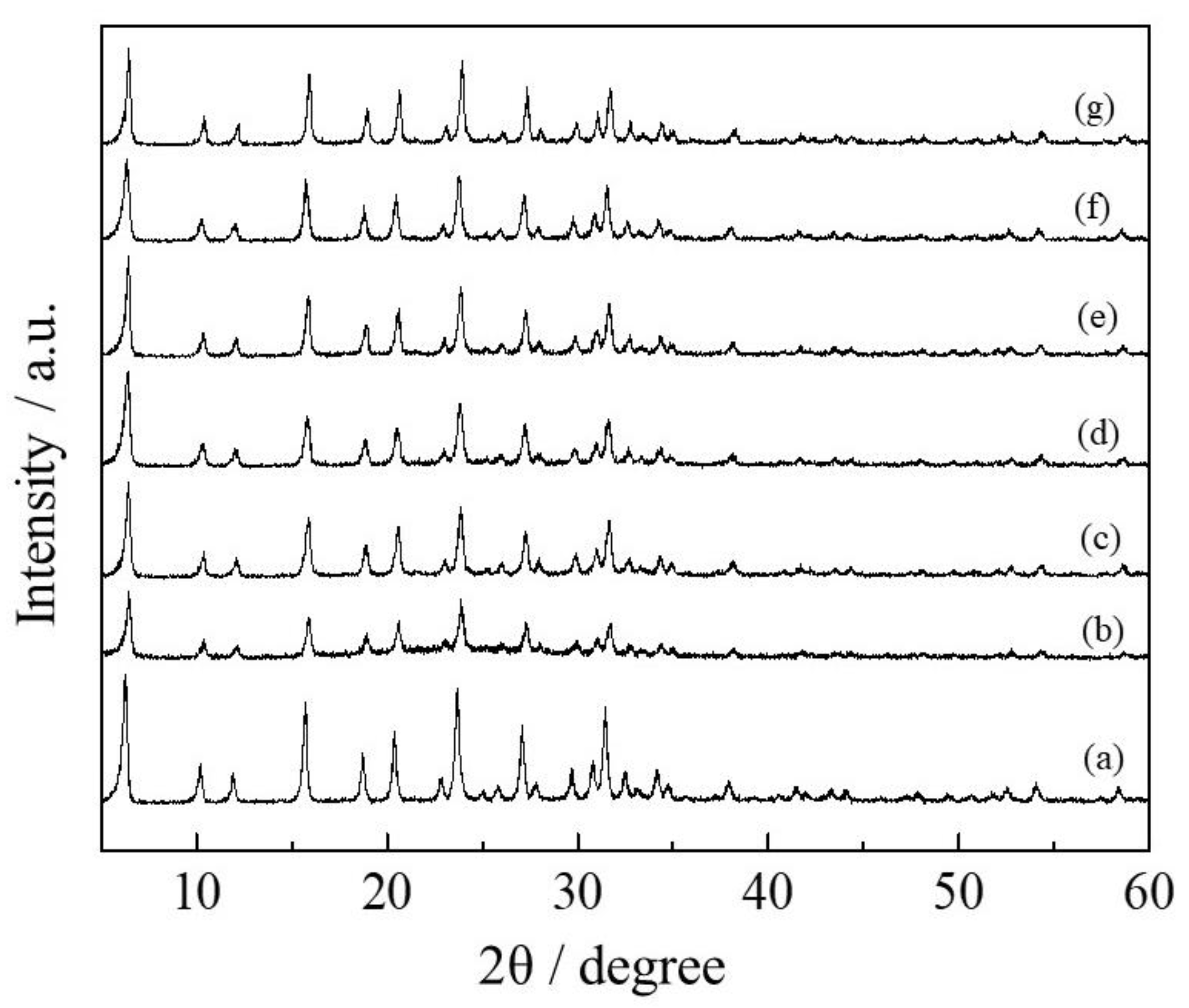

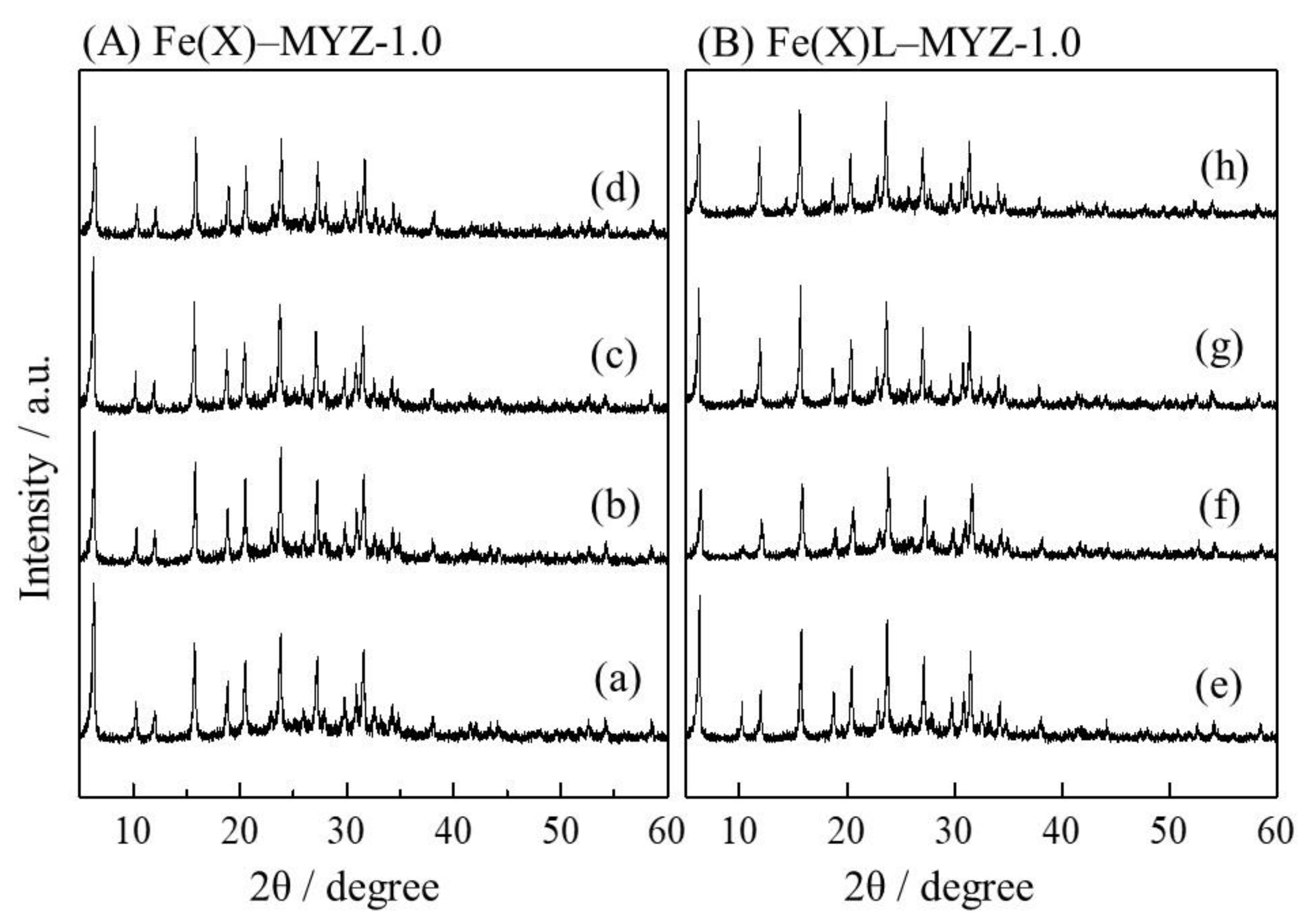
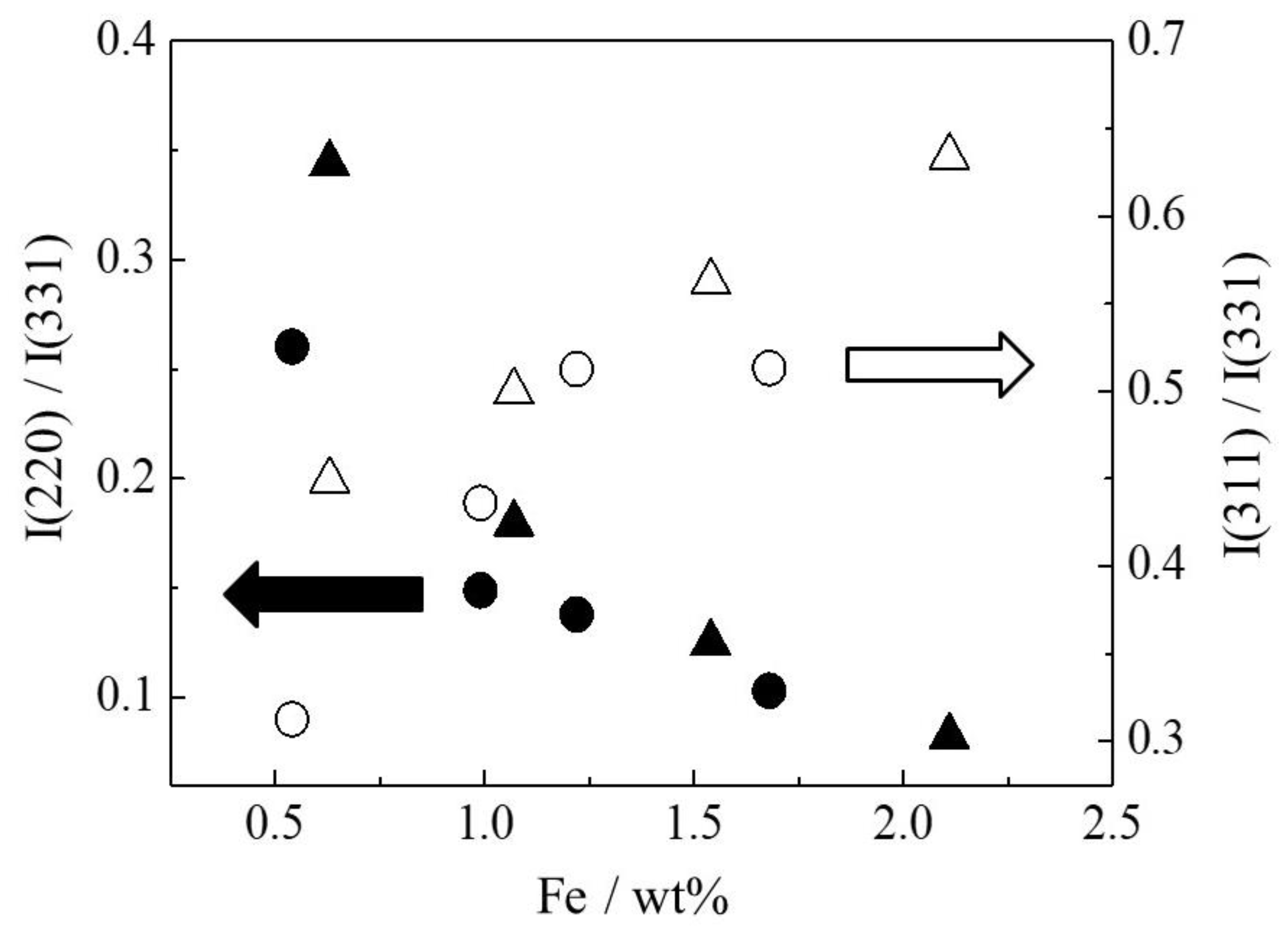
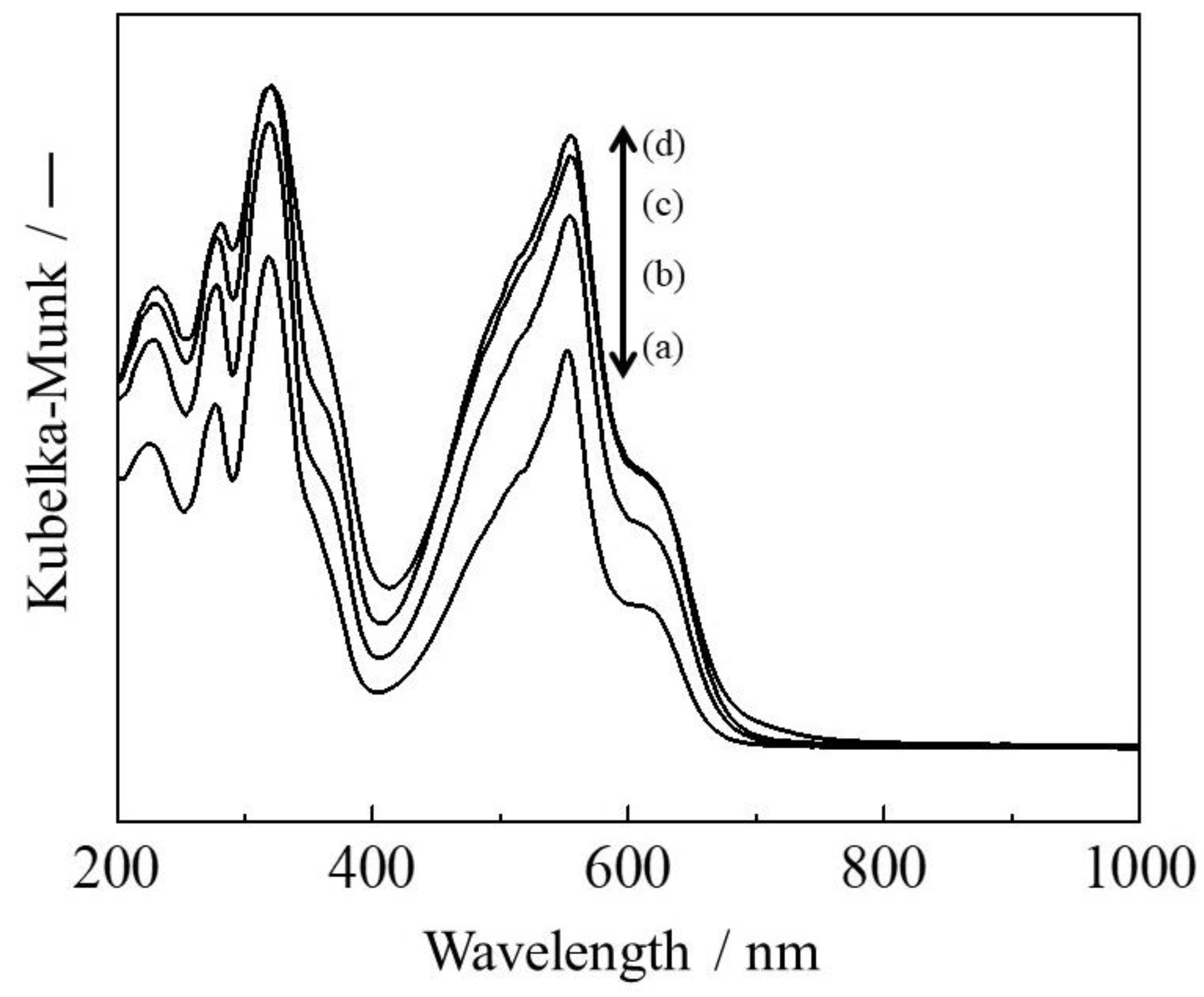
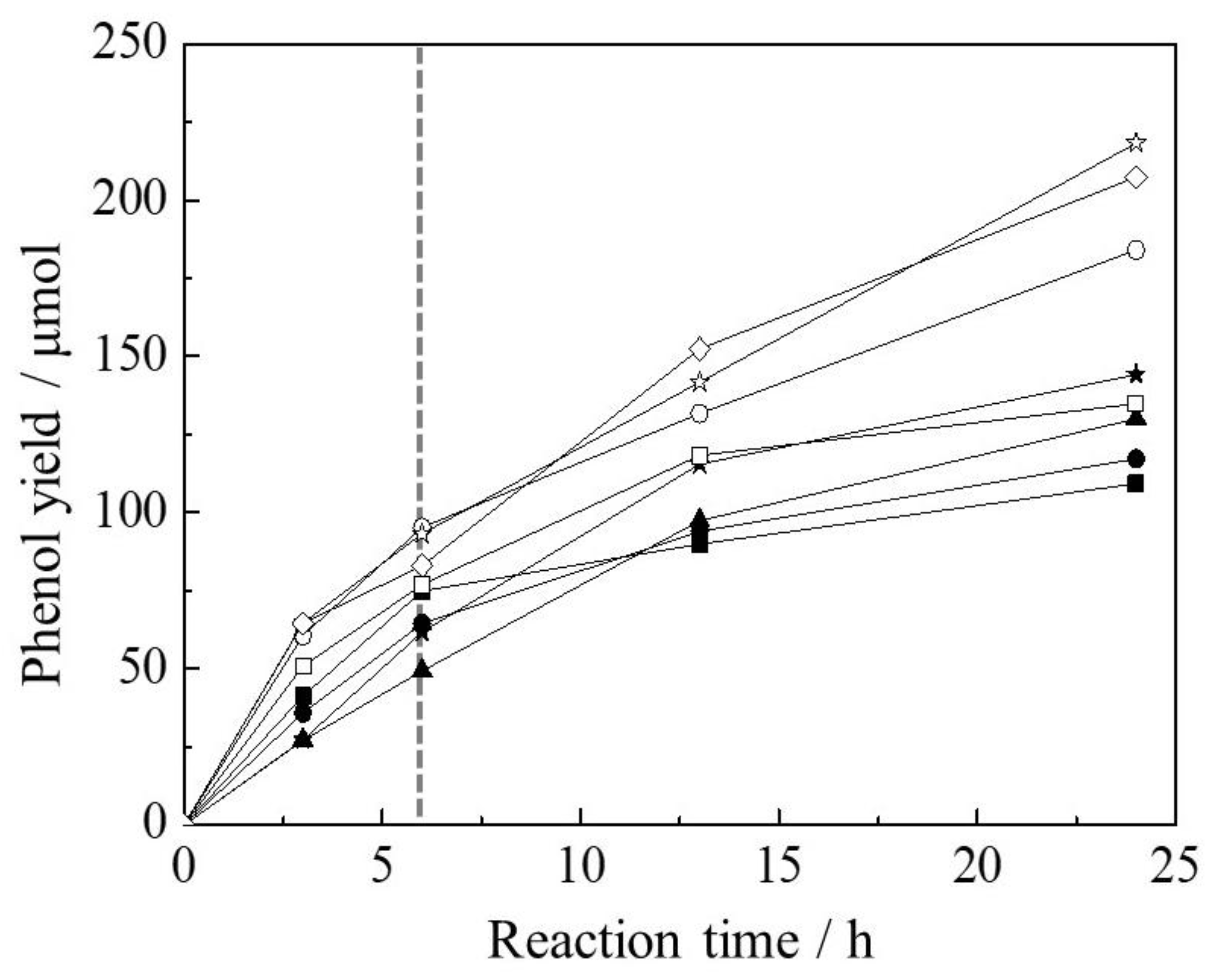
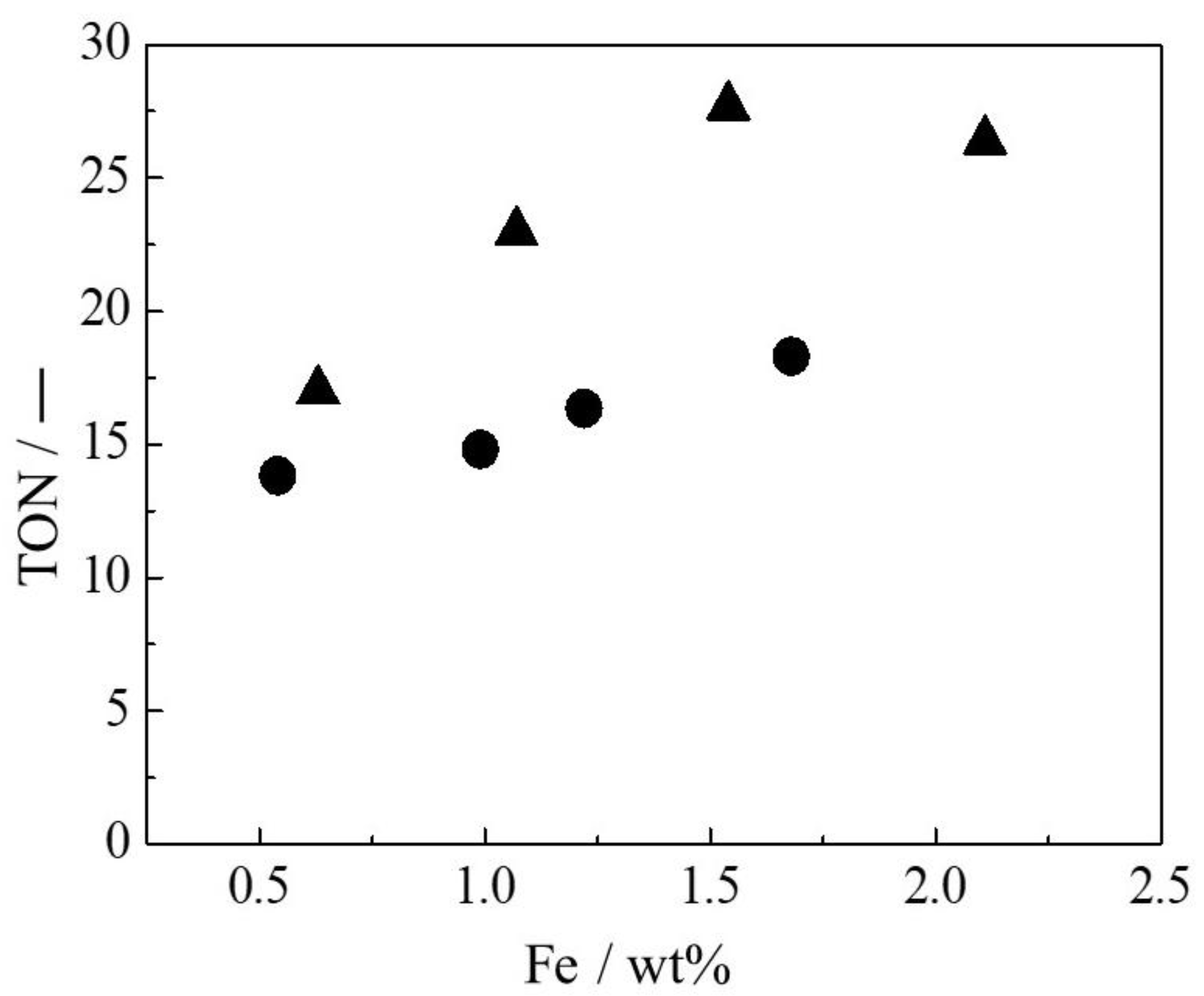
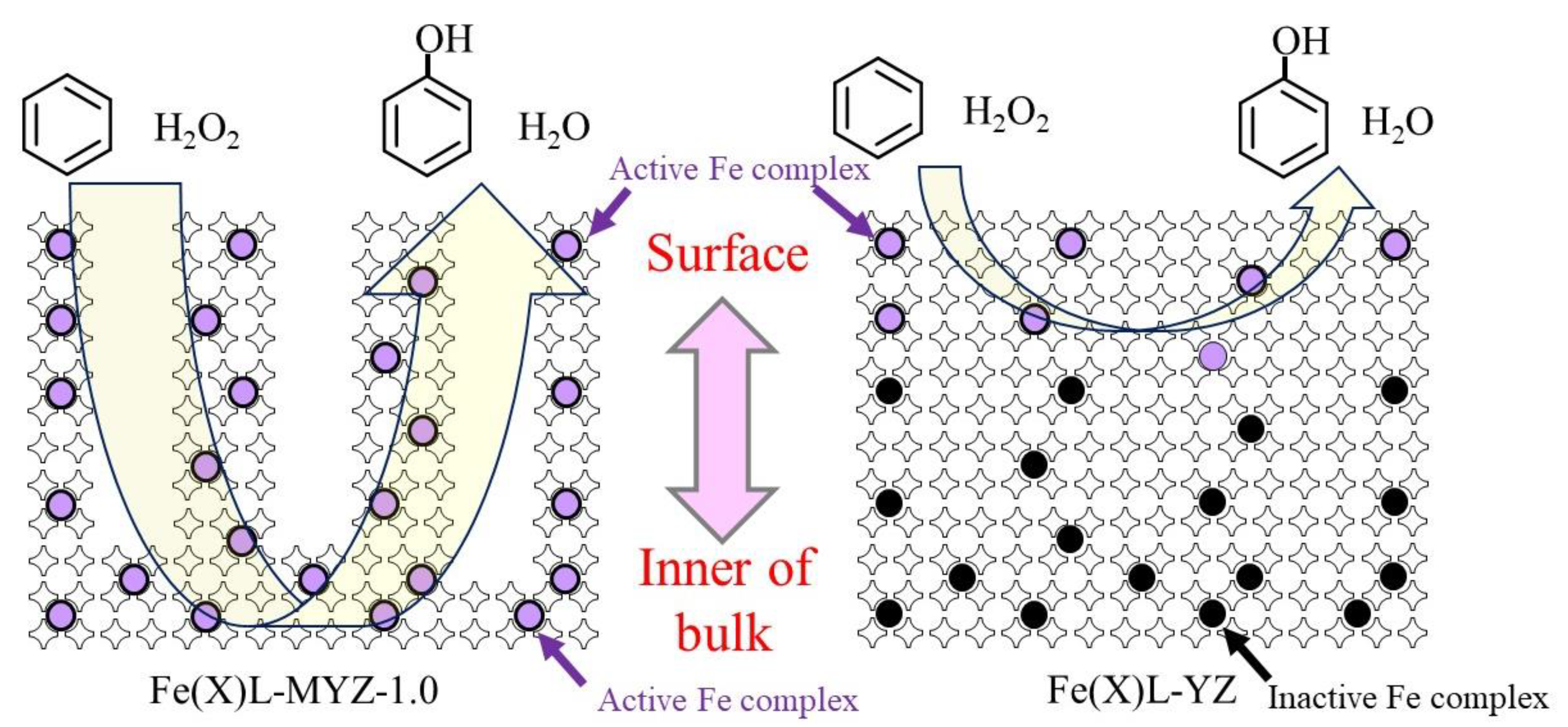

| SBET (a) /m2 g−1 | Vm (b) /cm3 g−1 | Vtotal (c) /cm3 g−1 | dp (d) /nm | Vmeso (e) /cm3 g−1 | Vmicro (f) /cm3 g−1 | Smeso (g) /m2 g−1 | Smicro (h) /m2 g−1 | Stotal (i) /m2 g−1 | |
|---|---|---|---|---|---|---|---|---|---|
| YZ | 960 | 221 | 0.61 | 2.5 | 0.11 | 0.54 | 17 | 1745 | 1755 |
| MYZ-0 | 828 | 190 | 0.77 | 3.7 | 0.43 | 0.56 | 354 | 1257 | 1376 |
| MYZ-0.5 | 822 | 189 | 1.09 | 5.3 | 0.65 | 0.39 | 245 | 1344 | 1666 |
| MYZ-1.0 | 775 | 178 | 1.10 | 5.7 | 0.73 | 0.33 | 270 | 1177 | 1522 |
| MYZ-5.0 | 637 | 146 | 0.88 | 5.5 | 0.55 | 0.30 | 206 | 1031 | 1291 |
| MYZ-16 | 631 | 145 | 0.85 | 5.4 | 0.51 | 0.30 | 194 | 1049 | 1292 |
| MYZ-24 | 639 | 147 | 0.79 | 4.9 | 0.45 | 0.36 | 168 | 1147 | 1313 |
Publisher’s Note: MDPI stays neutral with regard to jurisdictional claims in published maps and institutional affiliations. |
© 2022 by the authors. Licensee MDPI, Basel, Switzerland. This article is an open access article distributed under the terms and conditions of the Creative Commons Attribution (CC BY) license (https://creativecommons.org/licenses/by/4.0/).
Share and Cite
Yamaguchi, S.; Ishida, Y.; Koga, H.; Yahiro, H. Direct Hydroxylation of Benzene with Hydrogen Peroxide Using Fe Complexes Encapsulated into Mesoporous Y-Type Zeolite. Molecules 2022, 27, 6852. https://doi.org/10.3390/molecules27206852
Yamaguchi S, Ishida Y, Koga H, Yahiro H. Direct Hydroxylation of Benzene with Hydrogen Peroxide Using Fe Complexes Encapsulated into Mesoporous Y-Type Zeolite. Molecules. 2022; 27(20):6852. https://doi.org/10.3390/molecules27206852
Chicago/Turabian StyleYamaguchi, Syuhei, Yuito Ishida, Hitomu Koga, and Hidenori Yahiro. 2022. "Direct Hydroxylation of Benzene with Hydrogen Peroxide Using Fe Complexes Encapsulated into Mesoporous Y-Type Zeolite" Molecules 27, no. 20: 6852. https://doi.org/10.3390/molecules27206852





